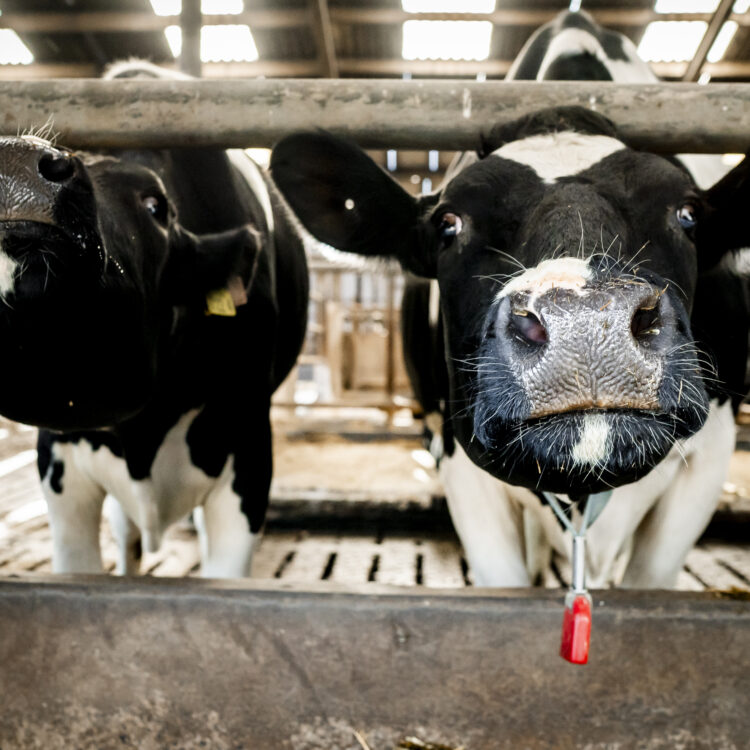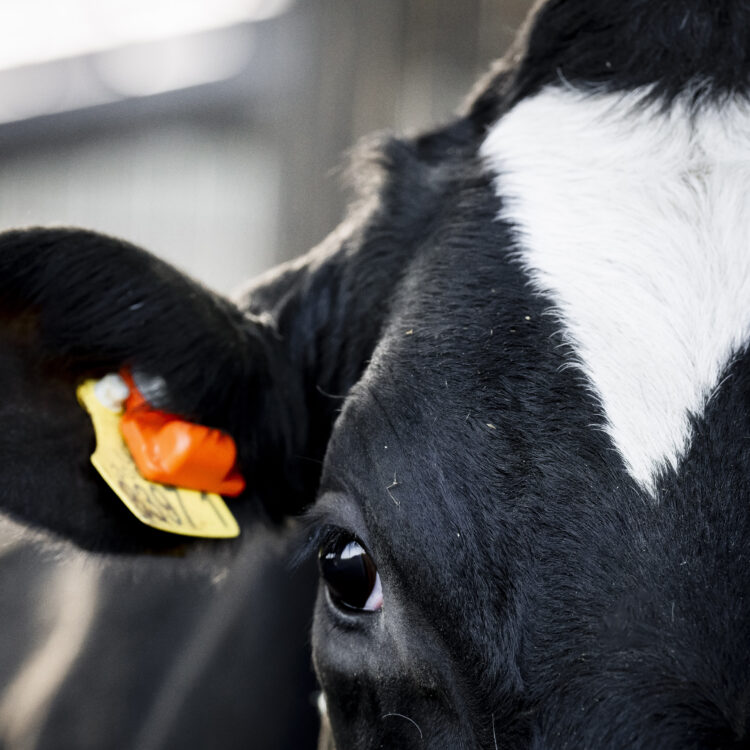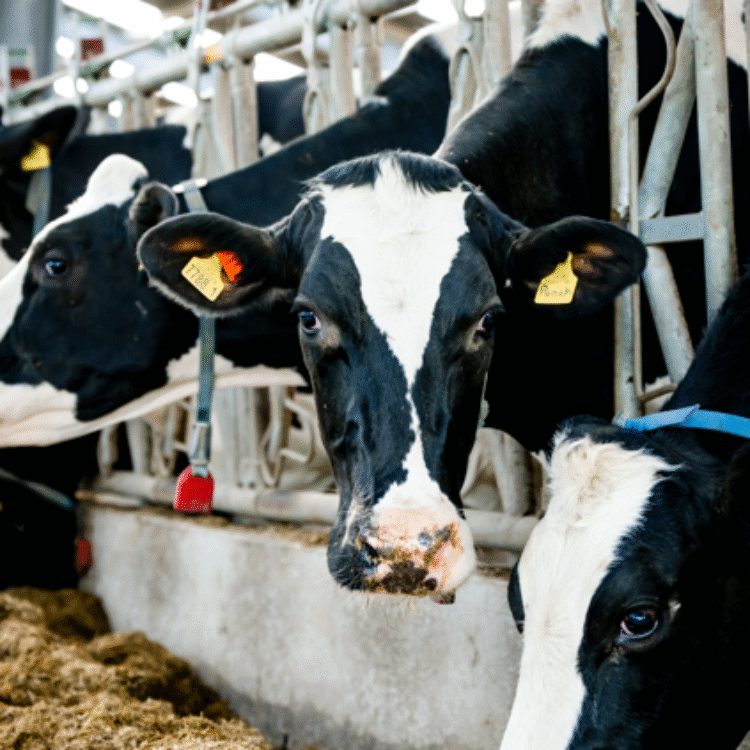
News
Increasing dairy productivity and boosting sustainability with forage pre-treatment
Northern Ireland dairy unit making most out of homegrown forage after seeing jump in yields by pre-treating rations
Taking a sustainable approach to production, alongside a long-term view on maintaining milking quantities and quality by maximising forage potential, has been the cornerstone of success for an award-winning dairy operation in north-west Northern Ireland.
Self-sufficiently processing and bottling its own milk, supplying to supermarkets, independent retailers and cafes across the heart of this dairy strong region, as well as to local schools around the town of Castlederg and the surrounding area in County Tyrone, Grove Dairy has always taken a progressive approach to production. The family run enterprise sees John Mitchell overseeing the farm operation, while sister Lisa looks after the processing unit and production plant, supported by parents Jack and Hazel Mitchell.
“Our parents, Jack and Hazel then manage us,” quips John, as he explains how all four continue to play an active role in the farm and dairy operation, managing a team of seven in the yard, and 18 in the dairy including the in-house lorry drivers delivering the milk to the retailers. Indeed, it was Jack who established the dairy back in 1978, and from day one the emphasis has always been on supporting a high-yield herd with good solids, so that the dairy can be in charge of the quality and freshness of milk produced
Alongside 700 indoor housed high-yielding Holstein milking cows, a number John intends to increase to 800, the farm has 400 acres of grass on a multi-cut system, and 230 acres of maize, with a key focus on getting as much as possible from the home-grown forage, from both a cost and sustainability perspective.
Achieving good quality forage is of paramount importance to the system. Regular analysis using a handheld NIR means John is able to determine his baseline, and make informed decisions on how to improve the ration to give the cows what they need to perform.
The multi-cut system is based around four cuts per year, but the challenging weather conditions last year saw five cuts, with the last taken at the start of October. “We couldn’t cut when we wanted, and this compromised on quality and presented a fresh challenge. Having enjoyed good quality the year before, this last year has been trickier, with variable quality across every cut and higher NDF readings.
“We have had to adjust rations to maintain where we want to be at,” John explains. “Economically it is hard to justify when the milk price is so poor, but I take the long-term view that maintaining cow performance now will put us in the best position to get that return when the milk price lifts.”
There are already signs that an uplift may not be too far off, certainly given the drastic reduction in milk price production seen this year in comparison to last. Having taken the opposite approach previously, and missing out on price increases as he hadn’t got the herd back up to speed in time, John intends to fully reap the benefits this time around.
Pre-treatment to help maximise forage potential
Automation has been a key feature to the farm operation, with the introduction of 14 Lely feeding robots some seven years ago, making this probably the largest set up of its kind in Ireland.
Alongside the introduction of the automatic feeding system, and in consultation with Martin McConnell, John’s long standing feed adviser from Trident MicroNutri, it was decided around the same time to trial a forage pre-treatment within the mix to help maximise the forage potential.
“We had struggled to get enough forage into diets, with the high NDF levels we have seen this last year a recurrent problem, so when we had the option to trial Vista Pre-T forage pre-treatment, we were open to the opportunity,” says John.
Designed to improve the digestibility and energy status of forages, the pre-treatment works by roughening up the forage before feed-out. As well as providing a rumen friendly source of energy to boost overall productivity, getting more energy from fibre also has benefits in reducing emissions.
Initially top dressing the silage in the wagon, John now adds Vista Pre-T to the TMR, mixing with minerals, yeasts and a rumen buffer. By increasing energy potential in the ration, it has enabled John to push for extra performance from the herd.
“We immediately saw a substantial increase in milk production, around 1.5 kilos per cow, and that told me enough,” says John, stating he has not looked back since, as he maintains that consistency across the herd. In one isolated incident, when John had run out of the pre-treatment over a period of two weeks, he witnessed a significant drop in milk production and components. Over a total three-week period, averages dropped from 34.5 litres per cow to 32.6 litres, while butterfats dropped 0.08% and proteins by 0.02%. Within 8-10 days John saw a response when the pre-treatment was added back into the ration. He was soon back on track and has continued to maintain that consistency.
“With the challenges this year we have struggled to maintain intakes due to high NDF, and are probably down at 12.5 kilos DM rather than the preferred target of between 13.5 and 14.5 kilos. This is where Vista Pre-T comes into its own,” he says.
Despite the challenges, averages are currently at 13,030 litres, ahead of 12,447 litres in the previous year. Solids have remained consistent, currently at 4.2% fats and 3.22% proteins. “I can in part put this down to breed genetics coming through the herd, and the fact that I have been able to be more ruthless at the bottom end of the herd,” says John.
“But the cows do have that energy requirement to produce what we need, so we need to make sure we are getting those forage intakes up, and making the most out of it,” he adds. Indeed, the herd’s top performing cow achieved 19,611 litres over 305 days, demonstrating what can be achieved with a focus on feed efficiencies and maximising forage potential, while also boosting sustainability credentials.
“Consistency is important to me, and has been why I have invested in the long-term herd health and genetics. I have invested in embryos from Canada and the US to change the genetic profile to improve both yields and components, as well as longevity. “The secret to the success of any dairy herd is in the replacements. By having good quality replacements, I know I can be ruthless with those cows not pulling their weight at the bottom end. If not required, I have stock to sell, so it offers me that flexibility,” John explains.
Taking the long-term approach and investing in feed quality, while maximising what can be achieved from homegrown forage, is certainly paying dividends. Late in 2023, John picked up a hattrick of awards at the Holstein NI award evening, winning best new entrant, best large herd and overall winner all within the junior section. “I will continue to trial new ideas and techniques, and when something works it becomes part of the operation. The investment in the forage pre-treatment has certainly become an integral part of my feeding system,” says John.
“I take a three-pronged approach, based around cow comfort, feeding management and genetics. The three work in tandem, and if you get that right you will benefit from the efficiencies and reap the rewards,” he concludes
-

Boost Milk Yield & Profitability with Rumen-Protected Amino Acids
This outlook highlights the growing importance of rumen-protected amino acids (RPAAs) in modern dairy nutrition. Advances in genetics have increased…
-

Mycotoxins in Maize: What You Need to Know This Season
Maize silage is an excellent forage for dairy cows – highly palatable and delivers energy whilst supporting rumen health. But,…
-

Mycotoxins In Maize
Maize can be an excellent forage for dairy cows. It is high in energy, while slowly fermentable and containing enough…
